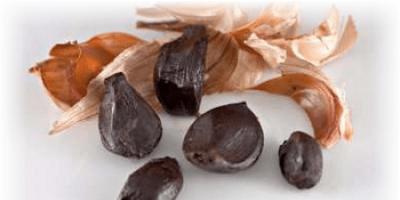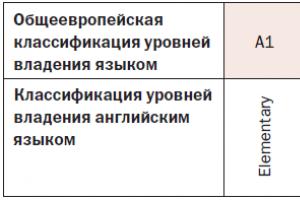Actually, this scrambled egg has a brand name and even several. In Azerbaijan it is called the sonorous, but slightly funny name kyu-kyu, in Israel it is also called the no less sonorous name shakshuka. I am sure that this dish is known in many other countries and is also called something special.
But let’s not get carried away with culinary linguistics, we have not gathered here for this, but we have gathered here to taste this scrambled egg, beautiful in taste and appearance, and remember how it is prepared. Although it must be said frankly that there are no specific rules for its preparation - there are so many options in terms of composition and technology that you could write a small dissertation on this topic. But we will not get carried away with scientific research, but will get straight to the point.
Although I have encountered this same kyu-kyu more than once in my journal, let me remind you of the main stages.
What did I take for this kyu-kyu?
Greens - young green onions, cilantro, parsley, dill, spinach.
What can you take from greens - yes, whatever you want - celery, mint, basil, wild garlic, nettles, young cabbage, etc.
I take approximately the amount of greens that can be mixed with eggs and other liquids and would not be too dry.
We will count 50-60 grams of each type of greens.
Eggs - 2 medium sized eggs
Garlic - 2-3 cloves, thinly sliced
A little kefir or yogurt - about 70-100 ml., You can also take sour cream.
Salt and freshly ground black pepper are a must, but not in large quantities.
So the greens are washed and not cut very finely. This is where I make my innovation - I like to put Armenian lavash in kyu-kyu - this is such a thin sheet of baked dough, in case anyone has forgotten...
Lavash is also cut or torn into small pieces by hand and mixed with herbs. In order for the pita bread to soften and not remain dry, I pour a little milk into the greens and add kefir (yogurt, matsoni, katyk, fermented baked milk...)
I can’t say that lavash in kyukyu is my new word in cooking, probably somewhere in the world there is some Zimbabwe where they also put Armenian lavash in kyukyu, if, of course, in that Zimbabwe they know what it is , but nevertheless - I put the pita bread and it gives!
All this splendor is salted, peppered, thoroughly mixed and left for a while so that the pita bread absorbs the milk and kefir and softens.
Meanwhile, the oil is heating up in a frying pan - as always, I cook with a mixture of sunflower and ghee. Place slices of chopped tomato in hot oil and fry on both sides. There is no need to salt the tomatoes - salt is already in the mixture.
The tomatoes are fried, the mixture is ready, the pita bread is saturated with milk and honey and kefir, you can pour everything into a frying pan and cover it with a lid to fry kyu-kyu. You need to fry over a fairly low heat so that the tomatoes on the bottom do not burn. The lid is needed so that the eggs set throughout their entire thickness and hold together all this green component.
Cooking will take approximately 10 minutes. Opening the lid we see a rising mass of greens mixed with a tender egg. Here I want to make a digression.
As a rule, kyu kyu is fried on both sides, but the omelette becomes a little dry. I believe that by frying covered, you can achieve complete cooking while maintaining the juiciness and tenderness of the dish.
Well, now you can use a spatula to halve this omelet and put it on plates - a tender, aromatic and nutritious breakfast, or lunch, or even dinner. This amount is enough. to satisfy the hunger of two adults. And without bread - there is already bread there.
Trust me - it's very tasty.
PS The composition of kyu kyu can include not only greens, but also a lot of other things - leftover fried meat from yesterday's dinner, boiled or stewed green beans in oil, fried onions, eggplant, cauliflower, chicken - boiled or fried left over from yesterday, pieces of cheese - in a word, almost everything you have edible at home.
1. The recipe for making an omelet with herbs is so simple that even a child can handle it. You can use absolutely everything - parsley, dill, spinach, basil and anything else that happens to be at hand.

2. The greens must be washed, dried well and chopped (if dried greens are used, they can be added either to the eggs or to hot oil). Some of the chopped greens can be left for decoration before serving.

3. Beat the eggs into a deep container and beat with a pinch of salt and pepper. Add greens and mix thoroughly.

4. Heat a small piece of butter in a frying pan (you can also use vegetable oil if desired) and carefully pour the omelette into it. Over medium heat, fry it covered for 3-4 minutes.
5. The finished omelette can be served immediately, adding sauce or side dish if desired.
6. The classic recipe for an omelet with herbs can be made even more interesting and appetizing. To do this, spread grated cheese over the entire surface of the hot omelette (you can also use soft cheese, chopped into pieces if desired) and carefully roll it up. You can do this in a frying pan, frying it for another 1-2 minutes so that the edges set. It turns out an incredibly tasty omelette stuffed with melted cheese.
A fragrant omelette with herbs is universal! This dish is suitable as a breakfast, as a lunch, and as a very satisfying afternoon snack. They say that it is better not to eat eggs in the evening, they say, they take a long time to digest and this makes it difficult to sleep. Well, let's not take any risks.
- 130 g Adyghe cheese;
- 5 eggs;
- 30 g feta;
- 70 ml milk;
- 20 g mixture of dill and parsley;
- 15 g flour.
Time - 30 minutes.
Calories per serving - 174 kcal/100 g.
Method for preparing an omelet with herbs:

Omelet with tomatoes and herbs
- 10 ml milk;
- 2 g black pepper;
- 3 eggs;
- 30 ml oil;
- 1 tomato;
- 70 g parmesan;
- 25 g dill.
Time - 20 minutes.
Calories - 199.
Read also: How I lost 19 kg in a month and a half
Procedure:
- Place the eggs in a bowl without shells, beat until fluffy and add spices and milk;
- Heat the oil in a frying pan and pour the egg mixture into it;
- Do not touch the omelette until it can cope alone, and during this time it is better to work on other ingredients. For example, a tomato needs to be rinsed and cuts made on it;
- Boil two mugs of water, pour into a bowl, place the tomato there;
- Leave for one minute, then drain the water or remove the fruit;
- Place it in ice water, you can even add ice;
- After one minute, remove the peel, cut into two parts to remove the stalk;
- Remove all the juicy “filling” so that only the tomato shell remains;
- Cut it into half rings and place on half of the omelette, leaving the other half empty, and also leave an empty strip on the side of the tomato (do not put them on the edge);
- Wash the dill, chop it finely and pour it onto the tomatoes;
- Fry for two minutes, then sprinkle Parmesan cheese on top of the dill;
- When the cheese begins to melt (about two minutes), cover the filling with the empty half of the omelette;
- Fry for another three minutes, then turn it over and fry for the same amount.
Omelette with sorrel and herbs
- 4 eggs;
- 20 g parsley;
- 2 g salt;
- 2 bunches of sorrel;
- 3 g black pepper;
- 160 g cream cheese;
- 70 ml oil;
- 60 g parmesan;
- 25 g butter;
- 15 g parsley.
Time - 20 minutes.
Calories per serving - 253 kcal/100 g.
Cooking process:
- Pre-set the oven to 250 degrees Celsius;
- According to tradition, immediately shred the cheese with a grater;
- Rinse the sorrel and chop it finely with a kitchen hatchet;
- Wash parsley and dill and chop with a hatchet;
- Break the eggs into a container, add spices and beat until fluffy;
- Add half the sorrel, all the dill and parsley to the eggs, mix;
- In the selected dish (note that you will first have to cook on the stove and then in the oven), put butter and pour in vegetable oil;
- Stir, bring to a homogeneous consistency;
- Pour in the egg mixture and add half the cream cheese;
- Combine ingredients with a spatula;
- When the omelette begins to thicken, add the remaining sorrel;
- Spread remaining cream cheese on top;
- Grate the Parmesan and sprinkle it over the top of the omelet;
- Drizzle it with oil, season to taste and place in the oven for three minutes.
Omelette with cottage cheese and herbs
- 170 g cottage cheese;
- 130 g chicken fillet;
- 3 eggs;
- 20 g parsley;
- 70 ml milk;
- 15 g dill.
Time - 50 minutes.
Read also: How I increased my breast size by 2 sizes in 1 week
Calories - 129.
Cooking steps:
- Rinse the parsley and dill and chop them finely;
- Bring the cottage cheese to a homogeneous consistency using a sieve or blender;
- Add eggs and grind everything into a homogeneous consistency;
- Pour in milk, add your favorite spices and add herbs;
- Clean the chicken, wash it and put it in a saucepan;
- Fill with water, add spices and put on the stove;
- When the water boils, skim off the foam and cook the meat for thirty minutes;
- Then cool it in the broth, then remove and cut;
- Add fillet pieces to egg mixture;
- Pour it all into a frying pan, fry until tender over low heat, covered.
Lush omelette with cheese and herbs in the oven
- 320 ml milk;
- 50 g dill or other herbs;
- 6 eggs;
- 10 g butter;
- 130 g cheese.
Time - 45 minutes.
Calories per serving - 154 kcal/100 g.
Cooking method:
- First of all, break the eggs into a bowl, beat them until fluffy;
- Next, pour milk into them and stir;
- You can taste some salt to suit the taste;
- Preheat the oven to 200 degrees Celsius;
- Grate the cheese on a medium grater and add it to the eggs;
- Rinse the dill, finely chop and add after the cheese;
- Next, grease the baking dish with butter on all sides;
- Pour the egg mixture and put it in the oven;
- Bake it for thirty minutes;
- When the time has passed, leave the omelette inside with the door closed for another five minutes;
- After this, you can take it out, cut it and serve it.
To ensure that your omelette bakes evenly, we strongly advise you to use a frying pan with a thick bottom and walls or cast iron cookware.
If the recipe requires you to close the lid of the pan, then follow the advice to end up with a fluffy dish. You should not open the lid again, as the omelette may fall due to a sudden temperature change.
Remember that any filling (meat, vegetables, herbs, cheese, etc.) should make up no more than 50% of the dish, otherwise there is a risk that the eggs will not turn out fluffy.
Be sure to try making one of the presented lush omelettes with herbs at your leisure. It will be delicious, and you can’t even imagine how easy it is! Try it!
Scrambled eggs with herbs rich in vitamins and minerals such as: vitamin A - 42.8%, beta-carotene - 20.1%, vitamin B2 - 23.7%, choline - 44.9%, vitamin B5 - 23.9%, vitamin B12 - 15.3%, vitamin C - 18.9%, vitamin D - 20%, vitamin H - 35.8%, vitamin K - 104.5%, vitamin PP - 11.5%, phosphorus - 23.5% , iron - 21.4%, iodine - 11.8%, cobalt - 88.4%, selenium - 51.2%
What are the benefits of scrambled eggs with herbs?
- Vitamin A responsible for normal development, reproductive function, skin and eye health, and maintaining immunity.
- B-carotene is provitamin A and has antioxidant properties. 6 mcg of beta carotene is equivalent to 1 mcg of vitamin A.
- Vitamin B2 participates in redox reactions, helps to increase the color sensitivity of the visual analyzer and dark adaptation. Insufficient intake of vitamin B2 is accompanied by impaired condition of the skin, mucous membranes, and impaired light and twilight vision.
- Kholin is part of lecithin, plays a role in the synthesis and metabolism of phospholipids in the liver, is a source of free methyl groups, and acts as a lipotropic factor.
- Vitamin B5 participates in protein, fat, carbohydrate metabolism, cholesterol metabolism, the synthesis of a number of hormones, hemoglobin, promotes the absorption of amino acids and sugars in the intestines, supports the function of the adrenal cortex. A lack of pantothenic acid can lead to damage to the skin and mucous membranes.
- Vitamin B12 plays an important role in the metabolism and transformation of amino acids. Folate and vitamin B12 are interconnected vitamins that are involved in hematopoiesis. A lack of vitamin B12 leads to the development of partial or secondary folate deficiency, as well as anemia, leukopenia, and thrombocytopenia.
- Vitamin C participates in redox reactions, the functioning of the immune system, and promotes the absorption of iron. Deficiency leads to loose and bleeding gums, nosebleeds due to increased permeability and fragility of blood capillaries.
- Vitamin D maintains homeostasis of calcium and phosphorus, carries out the processes of mineralization of bone tissue. A lack of vitamin D leads to impaired metabolism of calcium and phosphorus in the bones, increased demineralization of bone tissue, which leads to an increased risk of developing osteoporosis.
- Vitamin H participates in the synthesis of fats, glycogen, amino acid metabolism. Insufficient consumption of this vitamin can lead to disruption of the normal condition of the skin.
- Vitamin K regulates blood clotting. A lack of vitamin K leads to an increase in blood clotting time and a decreased level of prothrombin in the blood.
- Vitamin PP participates in redox reactions of energy metabolism. Insufficient vitamin intake is accompanied by disruption of the normal condition of the skin, gastrointestinal tract and nervous system.
- Phosphorus takes part in many physiological processes, including energy metabolism, regulates acid-base balance, is part of phospholipids, nucleotides and nucleic acids, and is necessary for the mineralization of bones and teeth. Deficiency leads to anorexia, anemia, and rickets.
- Iron is part of proteins of various functions, including enzymes. Participates in the transport of electrons and oxygen, ensures the occurrence of redox reactions and activation of peroxidation. Insufficient consumption leads to hypochromic anemia, myoglobin deficiency atony of skeletal muscles, increased fatigue, myocardiopathy, and atrophic gastritis.
- Iodine participates in the functioning of the thyroid gland, ensuring the formation of hormones (thyroxine and triiodothyronine). Necessary for the growth and differentiation of cells of all tissues of the human body, mitochondrial respiration, regulation of transmembrane transport of sodium and hormones. Insufficient intake leads to endemic goiter with hypothyroidism and slowing of metabolism, arterial hypotension, stunted growth and mental development in children.
- Cobalt is part of vitamin B12. Activates enzymes of fatty acid metabolism and folic acid metabolism.
- Selenium- an essential element of the antioxidant defense system of the human body, has an immunomodulatory effect, participates in the regulation of the action of thyroid hormones. Deficiency leads to Kashin-Beck disease (osteoarthritis with multiple deformities of the joints, spine and limbs), Keshan disease (endemic myocardiopathy), and hereditary thrombasthenia.
You can see a complete guide to the most useful products in the appendix.








